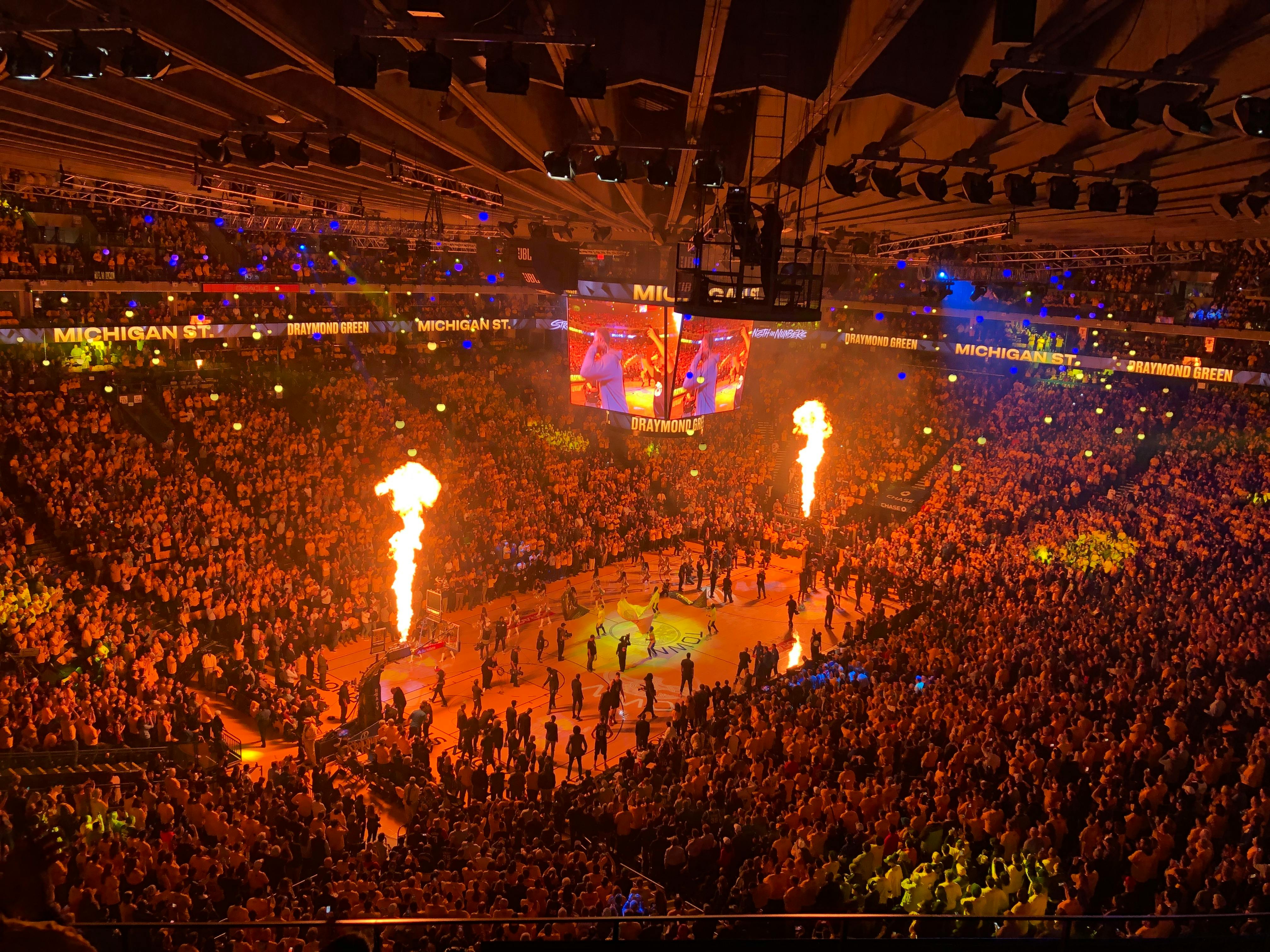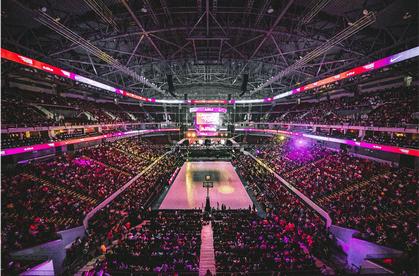The National Basketball Association (NBA) thrives on drama and excitement, both on the court and off it. One thrilling aspect is the ever-evolving landscape of teams through trades. These blockbuster moves reshape rosters, impact the future of franchises, and potentially alter players’ destinies. NBA trade rumors are high this season, and there is a reason why players and teams are interested.
In this article, we’ll examine the dynamics of NBA trades, analyze some of the most significant ones from the past, and explore their effects on both players and teams. Get ready for a deep dive into the world of NBA Trade Talks.
Trading in the NBA: Understanding the Process
Trades in the NBA involve the exchange of players or draft picks between teams, with the goal of improving the overall roster quality, acquiring valuable assets, or maintaining financial flexibility. Here’s a brief overview of what goes on behind the scenes:
Balancing Team Rosters
Teams might trade players to obtain better positional balance or acquire young prospects. For example, a franchise loaded with talented guards might need to bolster its frontline by trading one of its guards for a forward or center.
Eyeing the Future
Another reason for trades is to gather picks for future drafts. By accumulating more picks, franchises can increase their chances of selecting impactful players in upcoming drafts, thus improving the long-term outlook of the team.
Financial Factors
The NBA has implemented a salary cap system, which restricts teams from spending over a certain amount on player salaries. Franchises might trade high-salaried players for those with lower salaries to avoid penalties or to create more space for another star player.
NBA Trades That Left a Mark: A Look Back in Time
Let’s delve into some of the most prominent trades in NBA history that altered the landscape of the game:
1975: Milwaukee Bucks to Los Angeles Lakers – Kareem Abdul-Jabbar
In 1975, the Milwaukee Bucks traded six-time NBA MVP Kareem Abdul-Jabbar to the Los Angeles Lakers, where he teamed up with Magic Johnson. The duo led the Lakers to five NBA titles and cemented their legacies as legendary figures in the sport.
1992: Philadelphia 76ers to Phoenix Suns – Charles Barkley
In 1992, the Philadelphia 76ers trade Charles Barkley to the Phoenix Suns for three players. Barkley proceeded to win the MVP award and led the Suns to their first NBA Finals appearance.
2007: Minnesota Timberwolves to Boston Celtics – Kevin Garnett

In 2007, the Boston Celtics acquired Kevin Garnett from the Minnesota Timberwolves in a massive trade, including seven players and draft picks. Garnett and newly-acquired Ray Allen joined Paul Pierce, forming the “Big Three.” The trio won the NBA Championship in their first season together.
The Trade Effect: Aiding Players’ Careers
NBA trades can serve as game-changers for players seeking to elevate their careers. There are several potential benefits associated with being traded that can help athletes achieve personal and professional growth. Let’s discuss these advantages in greater detail:
Embracing a New Environment
A change of scenery can often work wonders for a player’s mentality, motivation, and overall mindset. By moving to a new team, players leave behind former setbacks, slumps, or stigmas and start anew. This fresh beginning encourages them to redefine themselves, forge new relationships, and adapt to different organizational values. As a result, they may find renewed inspiration, a confidence boost, and prospects for improvement.
Increased Game Time Opportunities
No matter how talented a player is, they may not receive ample playing time if they’re part of a deep roster with an abundance of skilled athletes in the same position. Being traded to a team that desperately needs their abilities enables them to play more minutes and contribute in meaningful ways. Additionally, increased playing time can lead to improved performance. The more a player is on the court, the more opportunities they have to hone their skills, make an impact, and raise their value within the league.
Unlocking Potential with the Right Guidance
Different coaching staffs employ various philosophies, schemes, and methods when it comes to player development. For some athletes, a trade to a team with a fresh coaching approach may be the key to unlocking their hidden potential. By aligning with a coaching staff that better understands their strengths, players can adapt their game to maximize their skills and find success on the court. In some cases, this could even lead to recognition, accolades, or an enhanced reputation within the NBA.
Complementary Teammates
Being surrounded by teammates with complementary skills and playing styles is essential for a player to excel in their role. Players who are useful in specific scenarios, such as floor-spacing shooters or rim-protecting big men, often rely on the talent around them to bring out their best. A trade can place a player into a more synergistic environment where they can provide timely support for their teammates and vice versa.
Thriving Under Pressure
A trade isn’t just a new opportunity; it can also be a challenge players can rise to meet. The expectation to perform well for a new team may ignite a competitive spirit in traded players. This pressure often motivates them to elevate their game and seize the moment to validate the trade and prove their worth to a new fan base.
Discovering Underrated Value
There are instances where a player’s full potential goes unnoticed in their former environment. It’s not uncommon for unassuming talents to become breakout stars after being traded. The new opportunity may reveal hidden aspects of their game that they can capitalize on, leading to a surge in their career seemingly out of nowhere.
Embracing a Leadership Role
Finally, a trade can offer a player the chance to assume more significant leadership responsibilities within a team. Whether it’s guiding younger players, providing valuable experience, or becoming a vocal presence in the locker room, trades offer athletes the chance to showcase their versatility and contribute to team success beyond the court.
Reaping Team Benefits from NBA Trades
 Teams engage in trades for various reasons, with each trade catering to different objectives:
Teams engage in trades for various reasons, with each trade catering to different objectives:
Roster Management
Trades help teams address the imbalance they may face in their roster. Specific positions might need reinforcement, and trading can lay the groundwork for a more balanced roster.
Strategizing for the Future
Front offices target trades to acquire budding talents or draft picks. These prospects have the potential to become key players in a successful team down the line.
Financial Flexibility
Large-salaried players may force teams to go over the salary cap limits, resulting in penalties. Trading these players out provides a near-term cap relief and paves the way for salary space for future roster moves.
Conclusion
The NBA’s trade landscape is as vibrant as the game itself. trades play an essential role in shaping franchises’ rosters by helping them gear up for both short and long-term success. These moves are crucial for player growth and allow them to flourish by being exposed to different environments and coaching styles.
As fans, we should buckle up for an action-packed ride. With ever-changing dynamics, the NBA never ceases to amaze and entertain with its trade talks and their impact on teams and players alike.



